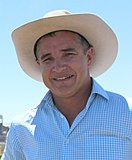| ||||||||||||||||||||||||||||||||||||||||||||||||||||||||||||||||||||||||||||||||||||||||||||||||||||||||
All 93 seats in the Legislative Assembly of Queensland 47 Assembly seats are needed for a majority | ||||||||||||||||||||||||||||||||||||||||||||||||||||||||||||||||||||||||||||||||||||||||||||||||||||||||
|---|---|---|---|---|---|---|---|---|---|---|---|---|---|---|---|---|---|---|---|---|---|---|---|---|---|---|---|---|---|---|---|---|---|---|---|---|---|---|---|---|---|---|---|---|---|---|---|---|---|---|---|---|---|---|---|---|---|---|---|---|---|---|---|---|---|---|---|---|---|---|---|---|---|---|---|---|---|---|---|---|---|---|---|---|---|---|---|---|---|---|---|---|---|---|---|---|---|---|---|---|---|---|---|---|
| Opinion polls | ||||||||||||||||||||||||||||||||||||||||||||||||||||||||||||||||||||||||||||||||||||||||||||||||||||||||
| Turnout | 87.52 ( | |||||||||||||||||||||||||||||||||||||||||||||||||||||||||||||||||||||||||||||||||||||||||||||||||||||||
| ||||||||||||||||||||||||||||||||||||||||||||||||||||||||||||||||||||||||||||||||||||||||||||||||||||||||
 Winning margin by electorate. | ||||||||||||||||||||||||||||||||||||||||||||||||||||||||||||||||||||||||||||||||||||||||||||||||||||||||
| ||||||||||||||||||||||||||||||||||||||||||||||||||||||||||||||||||||||||||||||||||||||||||||||||||||||||
The 2017 Queensland state election was held on 25 November 2017 to elect all 93 members of the Legislative Assembly of Queensland, the unicameral Parliament of Queensland.[1][2]
The first-term incumbent Labor government, led by Premier Annastacia Palaszczuk, won a second term in government. They were challenged by the Liberal National opposition, led by Opposition Leader Tim Nicholls and minor parties One Nation, Katter's Australian Party and the Greens. The 2015 election outcome had delivered a hung parliament with 44 seats to the Labor opposition, 42 seats to the one-term Liberal National government, and three to the crossbench including two to Katter's Australian Party. Just one seat short of majority government, Labor was able to form minority government with confidence and supply support from sole independent MP Peter Wellington, who otherwise retained the right to vote on conscience. During the parliamentary term, Labor MPs Billy Gordon and Rob Pyne became independent MPs, however they both indicated they would provide confidence and supply support for the government.[3][4]
The day after the election, ABC election analyst Antony Green predicted that Labor would win up to 48 seats and was likely to form government in its own right.[5] By 6 December, several news agencies reported that Labor had won a majority of seats in the Parliament.[6][7][8]
With the redistribution increasing the size of parliament from 89 seats to 93 seats, Labor increased its representation by a net seven seats to a total of 48 seats, an increase of four since the last election and a notional increase of one since the redistribution, allowing it to form government in its own right by two seats. The Liberal National opposition decreased their representation by a net three seats to a total of 39 seats, a decrease of two seats since the last election and a notional decrease of five since the redistribution. On the crossbench, Katter's Australian Party won three seats, an increase of one since the last election and a notional increase of two since the redistribution, one new independent candidate won a seat while all the incumbent independents lost their seats. One Nation won its first seat since 2009 and the Greens won a seat at a state election for the first time.[9]
Despite a small two-party swing to Labor statewide and Labor increasing its seat total, a number of regional seats notably swung to the Coalition. The LNP regained the seat of Bundaberg from Labor as well as Burdekin which was held by the LNP prior to the election but made notionally Labor due to redistribution.
On 8 December 2017, Opposition Leader Tim Nicholls conceded defeat and announced he would step down as leader of the party.[10] Later that day, Palaszczuk visited Government House and was invited to form a majority government by the Governor.[11] The Second Palaszczuk Ministry was subsequently sworn in by the Governor on 12 December 2017.[12] This marked the tenth time in the last eleven elections that Queensland Labor has won government; it won eight consecutive election victories from 1989 to 2009, and was only out of government from 1996 to 1998 when Labor lost its parliamentary majority as well as from 2012 to 2015 following the Liberal National Party's 2012 landslide win.
- ^ "Queensland Premier calls snap election". news.com.au. 29 October 2017. Retrieved 3 November 2017.
- ^ "Queensland Premier Palaszczuk calls snap election". SBS. 30 October 2017. Retrieved 3 November 2017.
- ^ "Billy Gordon: Queensland Labor thrown into turmoil after Cook MP admits to undisclosed criminal history". ABC News. 29 March 2015.
- ^ "Rob Pyne quits Queensland Labor Party; Palaszczuk Government now even with LNP at 42 seats". ABC News. 7 March 2016. Retrieved 7 March 2016.
- ^ "Labor to win Queensland election with 48 seats: Green". ABC News. 26 November 2017. Retrieved 26 November 2017.
- ^ "Labor claims 47th seat in Qld election: Courier Mail 6 December 2017". Retrieved 8 April 2023.
- ^ Caldwell, Felicity (6 December 2017). "Labor hits magic 47 seats it needs for a majority". The Age. Retrieved 8 April 2023.
- ^ "Qld Election 2017". ABC Elections. Retrieved 9 December 2017.
- ^ "2017 Queensland Election Results". ABC Elections. 8 December 2017.
- ^ "Queensland election: LNP's Tim Nicholls concedes defeat". ABC News. 8 December 2017.
- ^ "Queensland election: Labor's Annastacia Palaszczuk claims victory with 48 seats". ABC News. 8 December 2017.
- ^ "It is now 100 per cent official - Queensland has a government". Brisbane Times. 12 December 2017.




